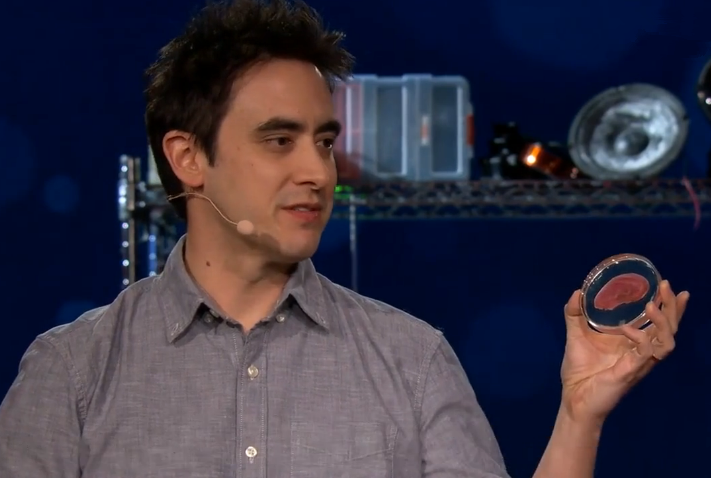What I'm really curious about is if one day,
我真正好奇的是會不會有一天,
it will be possible to repair, rebuild and augment our own bodies with stuff we make in the kitchen.
人們有可能修復、改造、強化我們自己的身體,用到的只是我們廚房里的材料。
Speaking of kitchens, here's some asparagus.
好,說到廚房,這是一些蘆筍。
They're tasty, and they make your pee smell funny.
它們很可口,不過會讓你的尿液有股怪味。
Now, I was in my kitchen, and I was noticing that when you look down the stalks of these asparagus,
有一次,我在我的廚房里發現,當你觀察蘆筍莖稈那一端(的截面),
what you can see are all these tiny little vessels.
你會看到這些細小的導管。
And when we image them in the lab, you can see how the cellulose forms these structures.
而當我們在實驗室里觀察它們時,你會發現纖維素是如何形成這些結構的。
This image reminds me of two things:
這張圖讓我想到了兩樣東西。
our blood vessels and the structure and organization of our nerves and spinal cord.
我們的血管和我們的神經和脊髓的結構組織。

So here's the question: Can we grow axons and neurons down these channels?
那么問題來了:我們能否沿著這些通道,培植神經軸突或神經元呢?
Because if we can, then maybe we can use asparagus to form new connections
如果我們可以實現,也許我們就能用蘆筍來形成全新的節點,
between the ends of damaged and severed nerves.
連接損傷或切斷的神經末梢。
Or maybe even a spinal cord.
或者甚至可以是脊髓。
Don't get me wrong -- this is exceptionally challenging and really hard work to do,
不要誤會--這非常具有挑戰性,而且極其難操作,
and we are not the only ones working on this.
并不是只有我們正在研究這方面內容。
But we are the only ones using asparagus.
但只有我們在使用蘆筍。
Right now, we've got really promising pilot data.
如今,我們已經取得了,具備可行性的實驗數據,
And we're working with tissue engineers and neurosurgeons to find out what's actually possible.
正在和人體組織工程師以及神經外科醫生合作,來找出其中的可能性。











